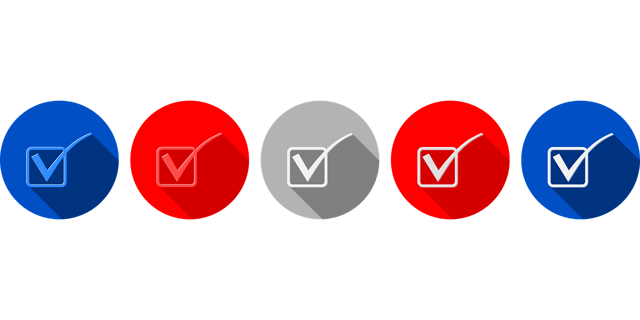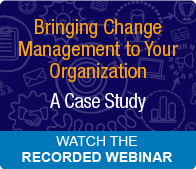In today’s fast-paced world, no organization has time for unimportant activities. The time your Sponsors and Change Agents spend on implementation needs to be laser-focused on what will really move the dial in getting a change implemented quickly. That’s why it’s crucial to make sure you have what you need to be successful when you’re selecting a change management methodology.
On December 1st, IMA is offering a free Webinar: Bringing Change Management to Your Organization; A Client Case Study. In this free one-hour session, Mercy Healthcare team members will share their own case study on how they chose and then rolled out AIM. It’s a perfect opportunity for you to benefit from one organization’s lessons and experience!
In the meantime, we are sharing best practice evaluation criteria you can use when selecting your own change management approach.
5 Criteria for Your Evaluation Checklist
If you are in the process of choosing a change management approach, or making sure what you have is right for your current strategic priorities, ask yourself the following questions:
 1. Is the Methodology Structured?
1. Is the Methodology Structured?
Just as Lean/Six Sigma is a problem-solving, process improvement methodology, your change management methodology should be a structured process that is applied to business changes to manage the human elements of a change. A structured change management methodology ensures you are not taking a "hit or miss" approach where one project team does all the right things (and gets adoption and value realization) and another team misses key elements or steps. Remember, structure requires more than tools and templates!
2. Is the Methodology Flexible?
Some frameworks are linear in scope. They provide users with a road map for implementing a change by completing a prescribed set of tools and templates. Linear frameworks can be sufficient when dealing with routine changes within a specific department or business unit. However, in our experience, not every change is linear! Transformation and other enterprise-wide changes are far more complex by definition. In fact, many implementations are quite unpredictable and require a process that can be flexible and scalable based on what is occurring at the moment, rather than what is next on the to-do list. Other critical factors, like Sponsorship, are on-going needs and are never “done.”
3. Does the Framework Provide Guidance on What to Do in a Variety of Situations?
The goal of “implementation management,” shouldn’t be "to do" a process, but rather to have core principles guide you on what you should be doing, given the day-to day project realities and challenges {Tweet This}. The change framework should be a repeatable process, but also one where you don't have to apply every step, every time. Some judgment should be involved in determining which strategies and tactics are needed, when. In other words, a good change management methodology will be designed to be used in any situation in a “fit for purpose way.”
4. Is the Methodology Robust Enough to Address Systemic Changes?
Ask yourself does the methodology provide guidance on how to address highly complex changes that cross multiple business units-- changes like mergers and acquisitions, one company solutions, cultural changes, shared services, etc? A systemic change management methodology is the framework for building competency in all of the key groups involved in implementing organizational change. This may include at a minimum:
- leaders who are Sponsors of these changes
- program and project management teams
- business process improvement groups
- IT professionals
- HR and OD professionals
If all of these critical players aren't knowledgeable about your change management practices, then you aren't taking a systemic approach.
5. Does the Methodology Have a Business Focus,or is it More Conceptual?
Some frameworks are more about getting people on board and the “journey of individual change,” rather than about business outcomes and Return on Investment. For example, most "home-grown" change management methodologies aren't focused on supporting the way a business actually operates and implements. A change management methodology should be focused on total value realization as defined by the following 5 measures of success:
-
On time
-
Within budget
-
Business Objectives
-
Technical objectives and
-
Human Objectives
Only when all five metrics have been met will you have behavior change. And without behavior change, there is no true change, which in turn means Return on Investment has not been achieved!
AIM: A Sophisticated Approach that Works
Of course most change management methodologies are packaged in user-friendly ways, and more often than not they include tools and templates that project teams can use. Some are home-grown and others are backed by years of research on best practices and/or behavioral science principles. But IMA’s Accelerating Implementation Methodology (AIM) is the only approach that meets all 5 of the requirements listed above.
AIM is a flexible, but business-disciplined change management methodology that is based on more than 30 years of field research and operationalized research-based principles. It is both systematic and systemic. And because AIM is driven by data, it appeals to business people, engineers and technology types, scientific professionals, IT professionals, and HR/OD/Learning professionals.
So have you chosen the right change management methodology for your organization? Download the Webinar and compare your results to what this client has achieved.

 1. Is the Methodology Structured?
1. Is the Methodology Structured?
